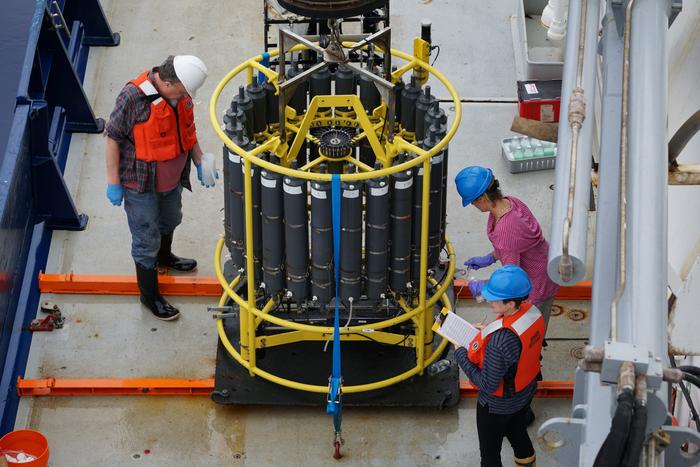For several decades, scientists have been seeing weirdly bright areas of the Antarctic oceans on satellite images. The mystery has been extremely difficult to investigate due to the harsh conditions in these seas, but now we know what’s going on. The water appears to be filled with silica-rich diatoms, a unicellular organism, and coccolithophores, a type of marine microalgae with elaborate shells that reflect light – enough to be picked up as a glowing region by satellites.
Back in the early 2000s, Barney Balch, a senior research scientist emeritus at Bigelow Laboratory for Ocean Sciences, and colleagues identified something strange on satellite images. It appeared that large amounts of seawater encircling Antarctica were appearing much brighter than other areas. It turns out that this area, now known as the Great Calcite Belt, has unusually high levels of particulate inorganic carbon, such as calcium carbonate and limestone, that reflects light back at satellites.
After subsequent research, scientists confirmed that this was coming from the shiny calcium carbonate shells of vast blooms of coccolithophores. But then the scientist identified another unusually bright area of water much further south from this calcite belt. Stranger still, the team believed these waters would be far too cold to hold coccolithophores. This mystery has persisted for years because the waters in this area are hard to explore and monitor due to the rough seas, icebergs, and frequent heavy cloud cover.
But Balch and colleagues have now been able to address this issue for the first time. Sailing aboard the R/V Roger Revelle from Hawaii, they traveled to 60 degrees latitude and then took a short easterly detour to monitor a point where water from the south appears to get pinched into several eddies. Here, the team was able to measure ocean color, calcification and photosynthesis rates, and concentrations of inorganic carbon and silica. These latter two minerals reflect light and play an important role in sequestering carbon in the deep ocean.
“Satellites only see the top several meters of the ocean, but we were able to drill down with multiple measurements at multiple depths,” Balch explained in a statement. “We’ve never had such a complete suite of integrated measurements through the water column in this part of the ocean.”
This multi-tiered approach, which combined biogeochemical measurements, optical data, and visual counts of microbes (literally counting them with a microscope), allowed the team to assess how plankton communities shift as they move south. They saw that the warmer, stratified waters of the subtropics are home to dinoflagellates, a diverse form of plankton, while the coccolithophores dominate the calcite belt, and, most interestingly, that diatoms appear in the silica-rich cold waters south of the Polar Front.

Scientists taking samples from a CTD rosette that collects water at each station for several variables at multiple depths.
Image credit: Bigelow Laboratory for Ocean Sciences.
This analysis amounts to a “smoking gun”, Balch said, for the causes of the weird reflections appearing on satellite images. It seems the culprit here is frustules (it is a real word) produced by diatoms that are made of silica and appear like microscopic pillboxes. These frustules reflect the light in the same way as coccolithophore shells, but it actually takes many more frustules to produce the same optical effect. This, the team says, is a testament to how dense their concentration is in these southern waters.
The team also found small concentrations of inorganic carbon and some calcification happening in these southern waters. This was a first. They also found some coccolithophores as well, suggesting that these little creatures can survive in much colder conditions than previously thought. It is possible, Balch added, that the eddies they were observing serve as “seed populations”, offering a small and consistent stream of coccolithophores into the Great Calcite Belt.
Identifying the coccolithophores in this water is important as their presence here could influence how carbon is transported through the Southern Ocean. This is considered one of the planet’s most significant carbon sinks.
The presence of diatoms in the southern waters also highlights the need for better algorithms to translate satellite data into useful methods for predicting ocean biology. This could include combining measurements from other satellites observing other variables to help distinguish between different species of plankton.
“We’re expanding our view of where coccolithophores live and finally beginning to understand the patterns we see in satellite images of this part of the ocean we rarely get to go to,” Balch said. “There’s nothing like measuring something multiple ways to tell a more complete story.”
The study is published in Global Biogeochemical Cycles.
Source Link: “Smoking Gun” Causing Parts Of Antarctic Ocean To Shine Weirdly Bright In Satellite Images Discovered